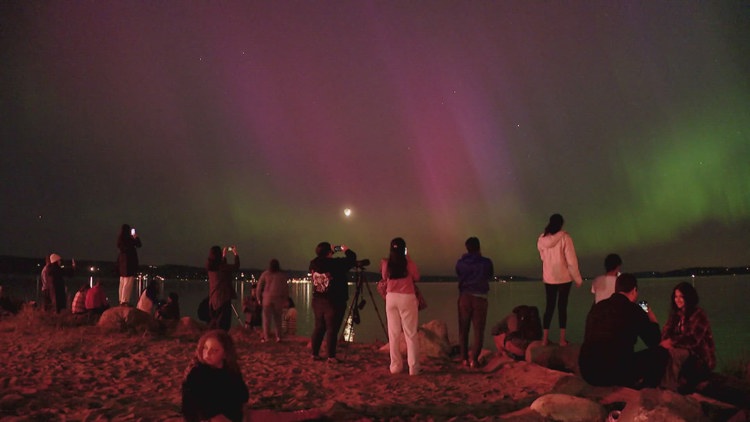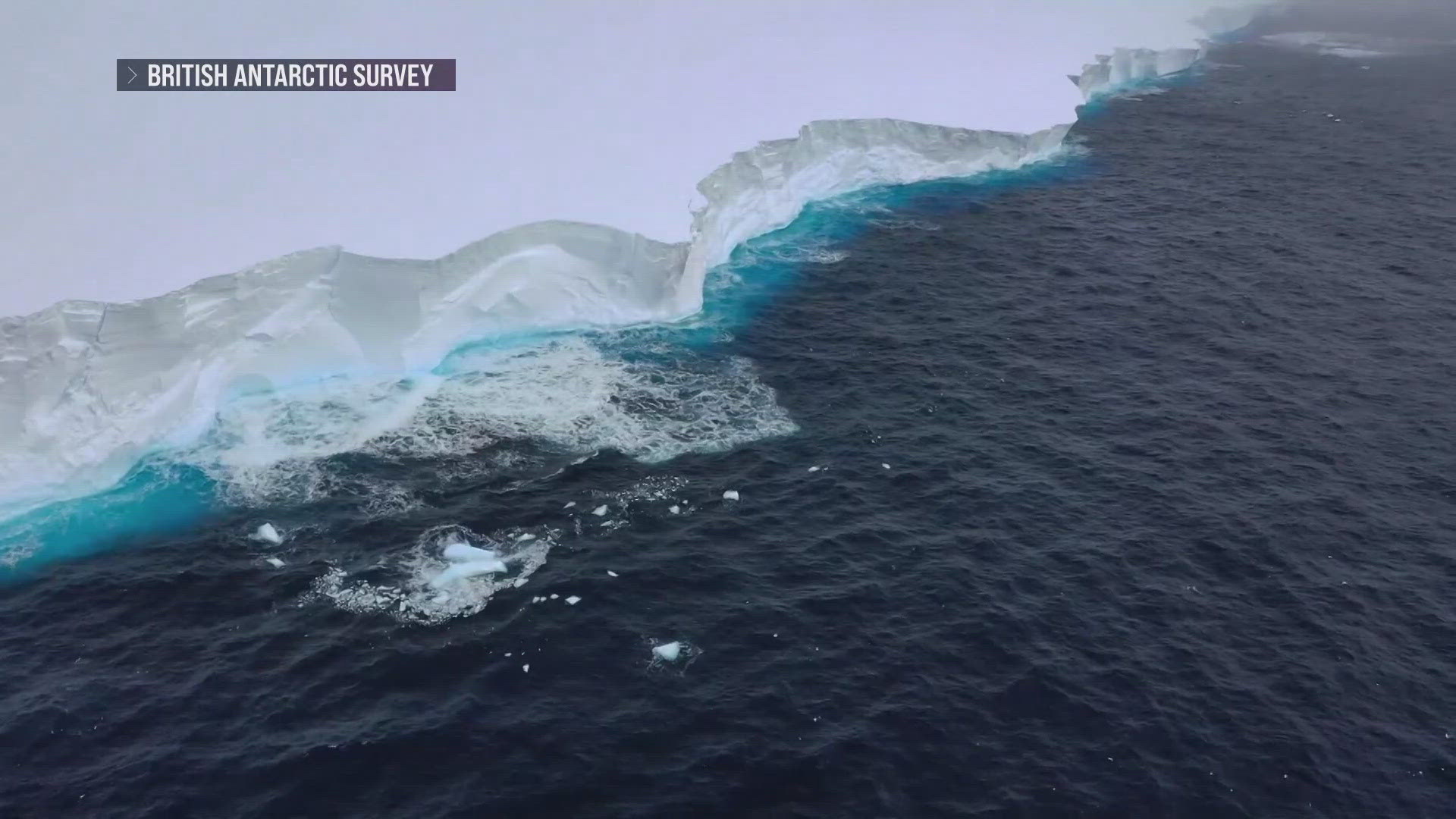SEATTLE — The Northern Lights may spread into western Washington on Friday and Saturday nights - but it will be a challenge to see them.
The geomagnetic storm that will produce the aurora borealis is registering as a G1-G2 on the scale used to measure intensity. A G1 is the lowest level on the scale, while a G5 is the most powerful. The higher a storm is on the scale the better chance people have of seeing the northern lights - and it also means there's a higher probability of impacts to the electrical power grid, spacecraft operations, and radio signals.
The Space Weather Prediction Center shows the sight line for Friday and Saturday night's aurora borealis extending far into southern Washington - but there will be an obstacle in the way.
Wildfire smoke that has settled over the Puget Sound region is expected to linger into the weekend and not begin clearing out until Saturday at the earliest. Because this geomagnetic storm is also on the less intense side, it will likely obscure the northern lights from view.
For those hoping for a powerful geomagnetic storm, like the May 11 one that pushed the northern lights as far south as Oklahoma, they're likely in luck if they're willing to be patient.
The sun is nearing the middle of its 11-year solar cycle, which space weather experts call the "solar maximum." The 11-year cycle occurs as the north and south magnetic poles of the sun switch places. As we approach the middle of that cycle, magnetic activity on the surface of the sun increases, meaning more powerful solar storms will occur more frequently.
This solar cycle has been "much more active" than experts had initially predicted, Sean Dahl with the Space Weather Prediction Center said, and even after the sun reaches the peak of its solar cycle, impacts will extend well into 2025 and 2026, including the potential for powerful aurora borealis-causing coronal mess ejections.



